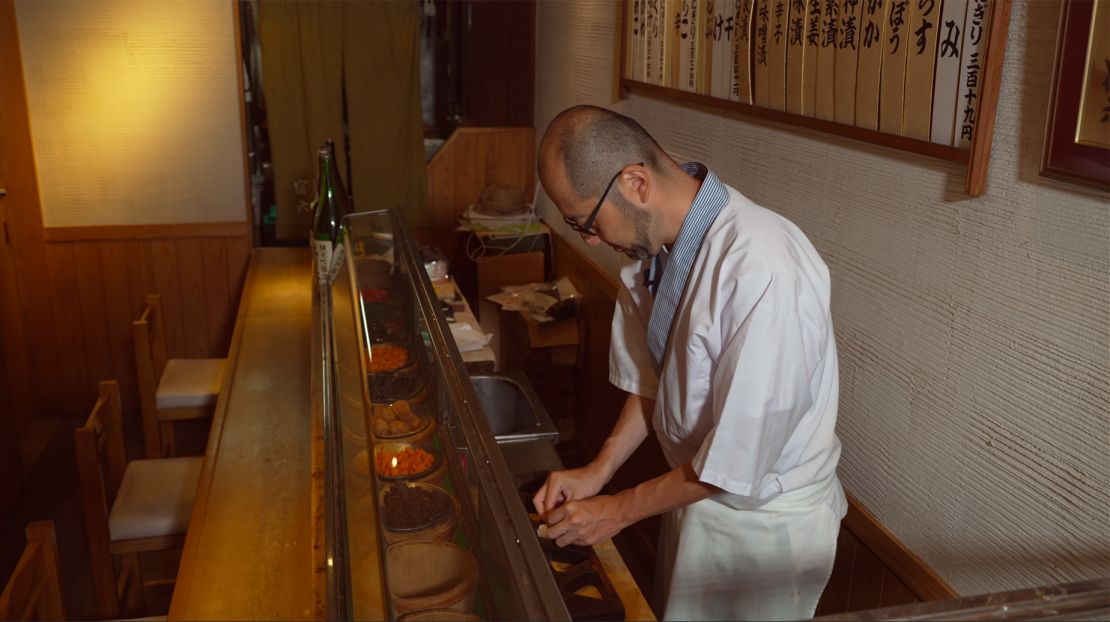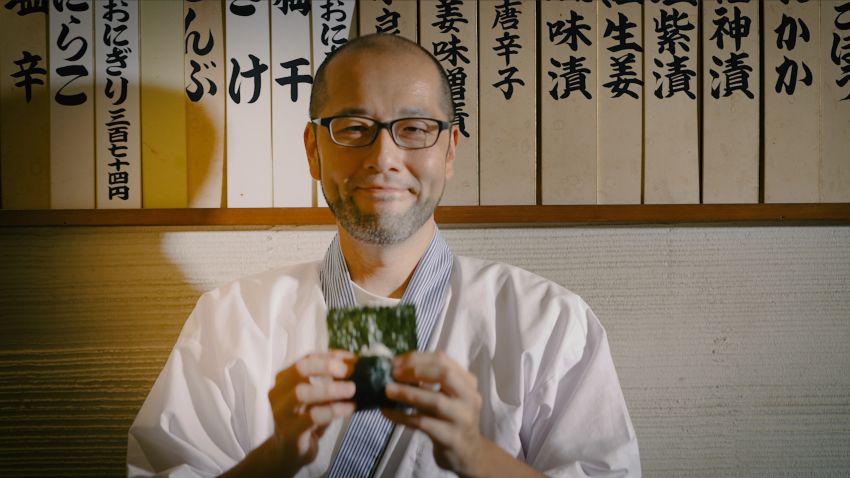A short walk from Sensoji, the oldest temple in Tokyo, sits another aging classic – Onigiri Asakusa Yadoroku.
Founded in 1954, it’s believed to be the city’s oldest onigiri (Japanese rice ball) restaurant.
“The reason why my family started this business is simple,” says Yosuke Miura, third-generation owner of the rice ball diner.
“My grandfather didn’t work and my grandmother had trouble living a financially stable life.”
Needing to support her unemployed husband and family, Miura’s grandmother founded the rice ball eatery – an origin story that’s reflected in the restaurant’s moniker.
Asakusa is the name of the district where the shop is located, but Yadoroku – which translates literally as “House Six” – has another, less flattering, definition.
“Roku means ‘rokudenashi,’ which means ‘useless person,’” he tells CNN. “So directly translated, the restaurant’s name means ‘a useless person’s house.’”
The onigiri trinity: Rice, nori and fillings

Long a popular snack choice for travelers, onigiri – also known as omusubi – can be found in convenience stores around Japan. Usually triangular or oval, they come stuffed with anything from spicy cod roe and pickled greens to grilled slices of beef with mayonnaise.
“I think that rice balls are the most typical food that everyone eats, from children to the elderly in Japan,” says Miura. “There is probably no one in Japan who hasn’t eaten one.”
Several decades ago, archaeologists claimed to have found a fossilized clump of rice from Japan’s Yayoi period (300 BCE to 250 ACE) that appeared similar to the onigiri that’s eaten today. Meanwhile, old paintings and records suggest that these handy meals have been enjoyed by hungry travelers and workers for centuries. The treats were even included in the very first bento boxes introduced on Japanese trains in 1885.
Fast forward to today and Onigiri Asakusa Yadoroku is an international attraction, luring visitors from around Japan and overseas. The 16-seater eatery has been included in the Michelin Guide as a Bib Gourmand Restaurant (meaning it offers high quality and good value) since 2019.
“There are three elements to a delicious rice ball – a good balance of seaweed, rice and ingredients,” says Miura.
While the shop uses rice and fillings from around Japan – such as shrimp in soy sauce, pickled plums, salmon and fish roe, it only uses nori (seaweed) from Tokyo.
Of all the ingredients, rice has the least flavor – nevertheless, is a crucial element in the chef’s mind.
Every September and October after the annual rice harvesting season, Miura gathers grains from around the country to sample. Then, he decides which variety they will use in the restaurant for the rest of the year.
For instance, Miura says he sampled more than 30 different types of grains before deciding to go with Koshihikari rice from Niigata prefecture in 2023.
To make the actual ball, he first puts the rice into a triangular mold, then picks the chosen fillings from the dozens of buckets that line the chef’s counter. He slaps the fillings into the rice before gently wrapping the entire package in a crisp sheet of nori.
It’s then handed to the customers in a bamboo basket. (Diners are advised to eat it swiftly before the warmth of the rice softens the nori.)
A genuine love for onigiri

The popularity of these versatile snacks has risen globally in recent years, with onigiri now found around the world.
“Nowadays everyone understands the word ‘onigiri,’ so in that sense I’m glad that we are getting some recognition,” says Miura.
In addition to being easy to carry, these savory nori-wrapped rice balls are also loved for their adaptability.
Miura says he often experiments with different flavors from different cultures when he travels, noting that he added cheese, tomato and Italian olive oil to an onigiri while representing his country inside the Japan Pavilion at Expo Milano in 2015.
“It’s not that onigiri has to be traditional, it’s about whether you can put your favorite ingredients in it and eat it deliciously,” he says.
“I think it’s probably good to add ingredients that match the culture of the people in the area … I don’t think that the rice balls have to be salmon or tuna with mayonnaise.”
As the third-generation owner of the decades-old shop, Miura says he didn’t take the helm of Yadoroku out of obligation to his family – he’s been genuinely passionate about onigiri since childhood.
“Every day when I came home from kindergarten and elementary school, I ate rice balls that my grandmother made for me,” he says. “It was a great snack. When I came home and felt a bit hungry, I didn’t eat cookies and cakes at all.
“I do it because I like it. I have absolutely no intention of continuing to preserve tradition. If I didn’t like onigiri in the first place, I’d probably quit the shop right away.”
Onigiri Asakusa Yadoroku; 3-9-10 Asakusa, Taito-ku, Tokyo, 111-0032, Japan






